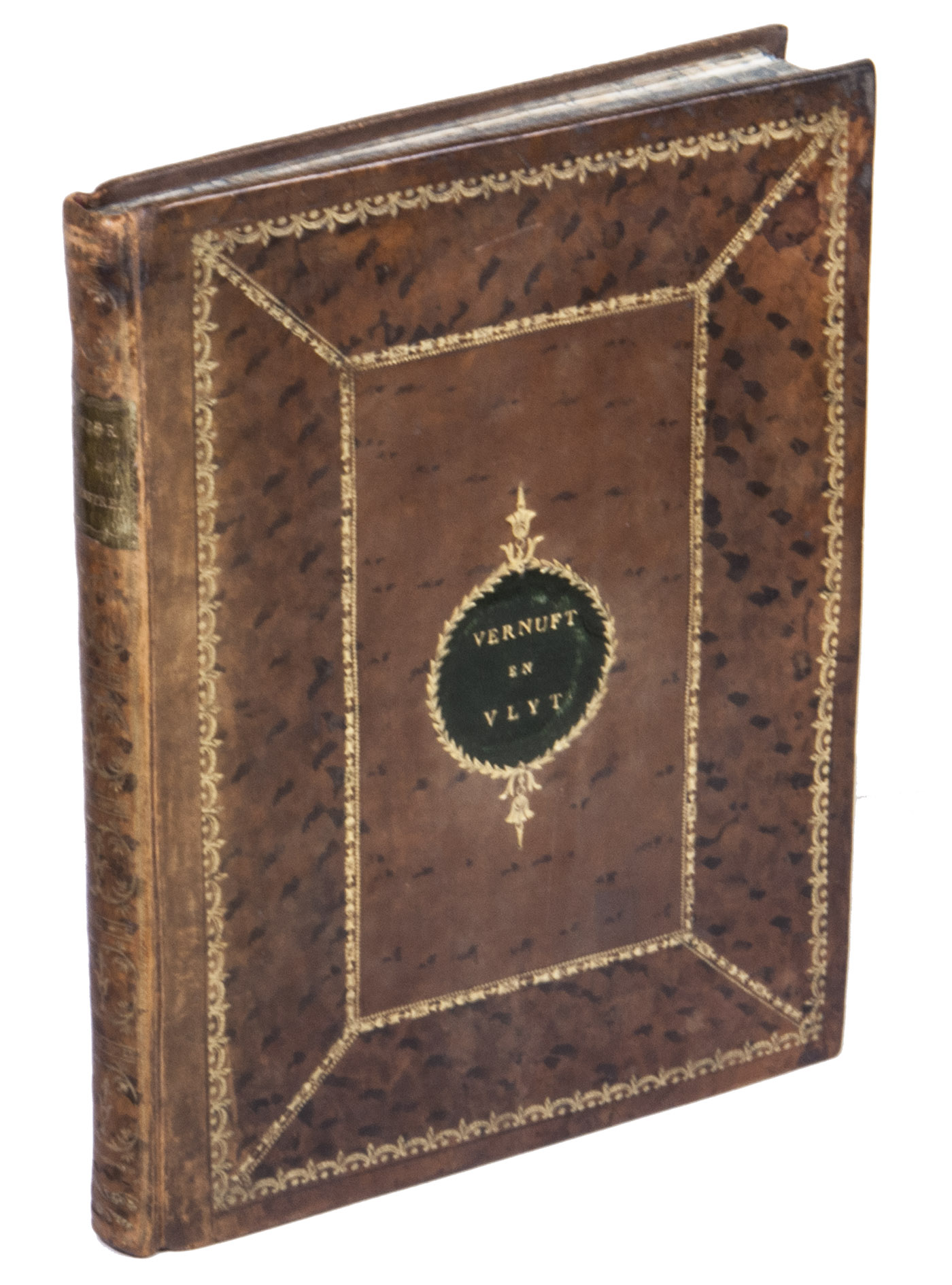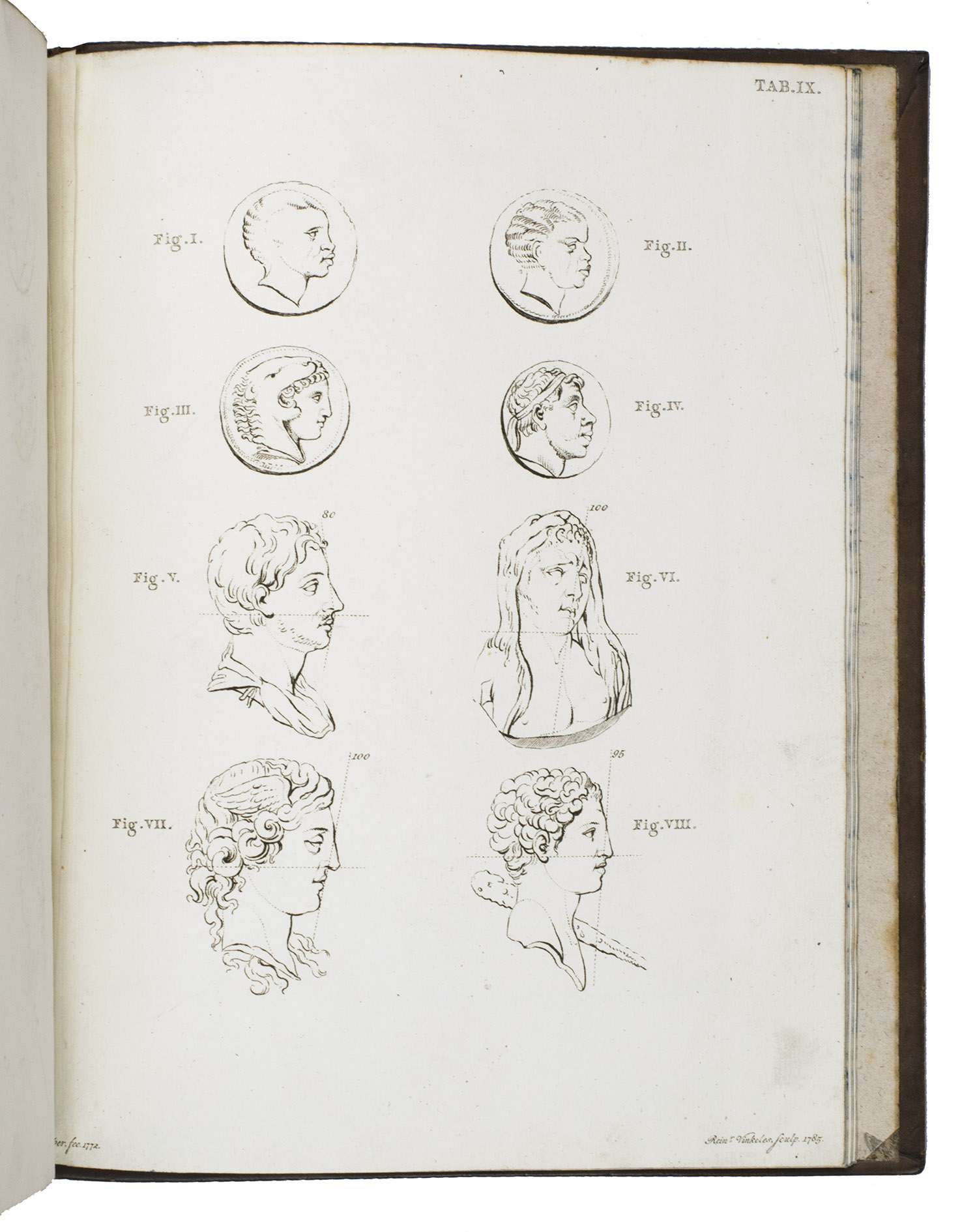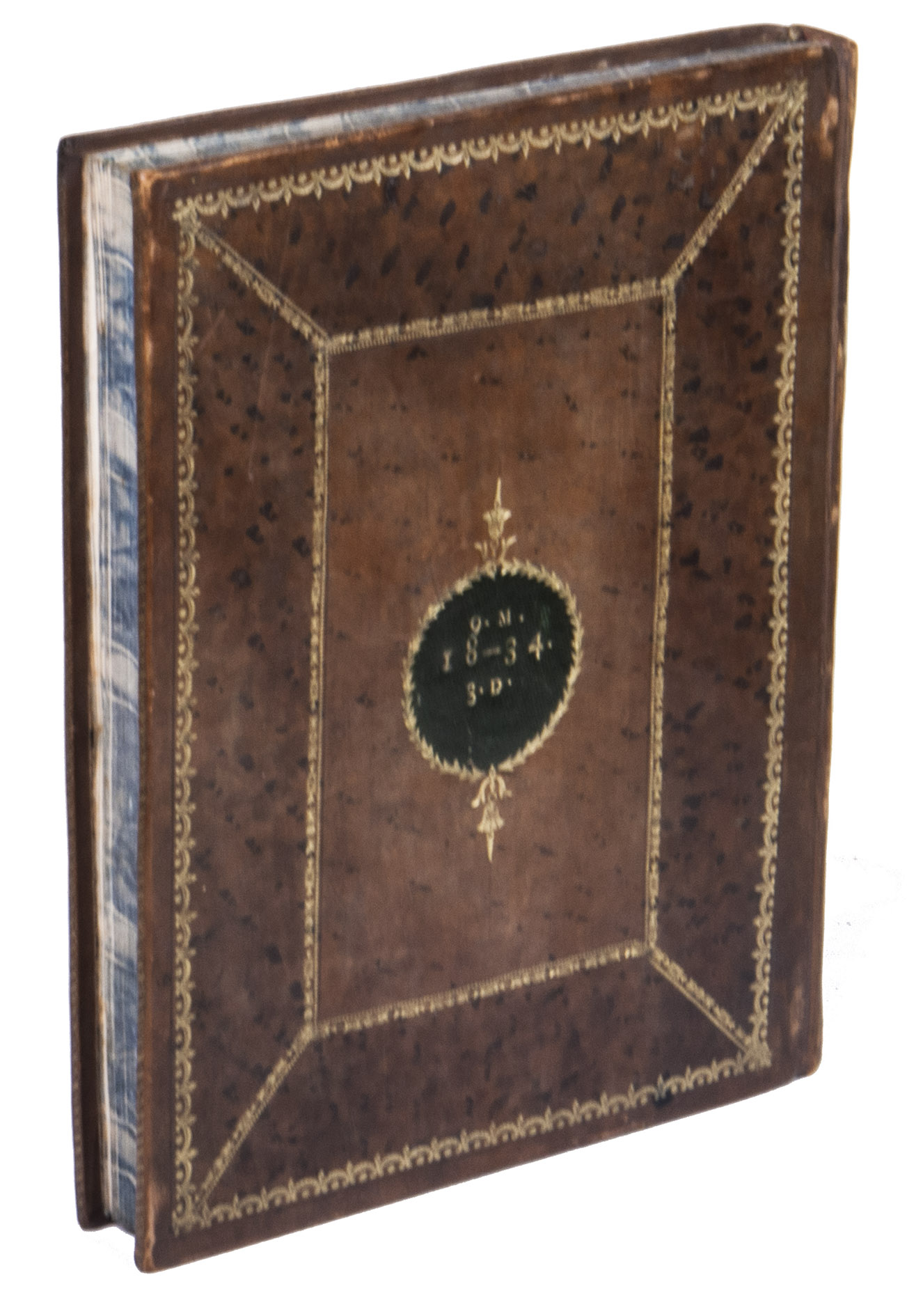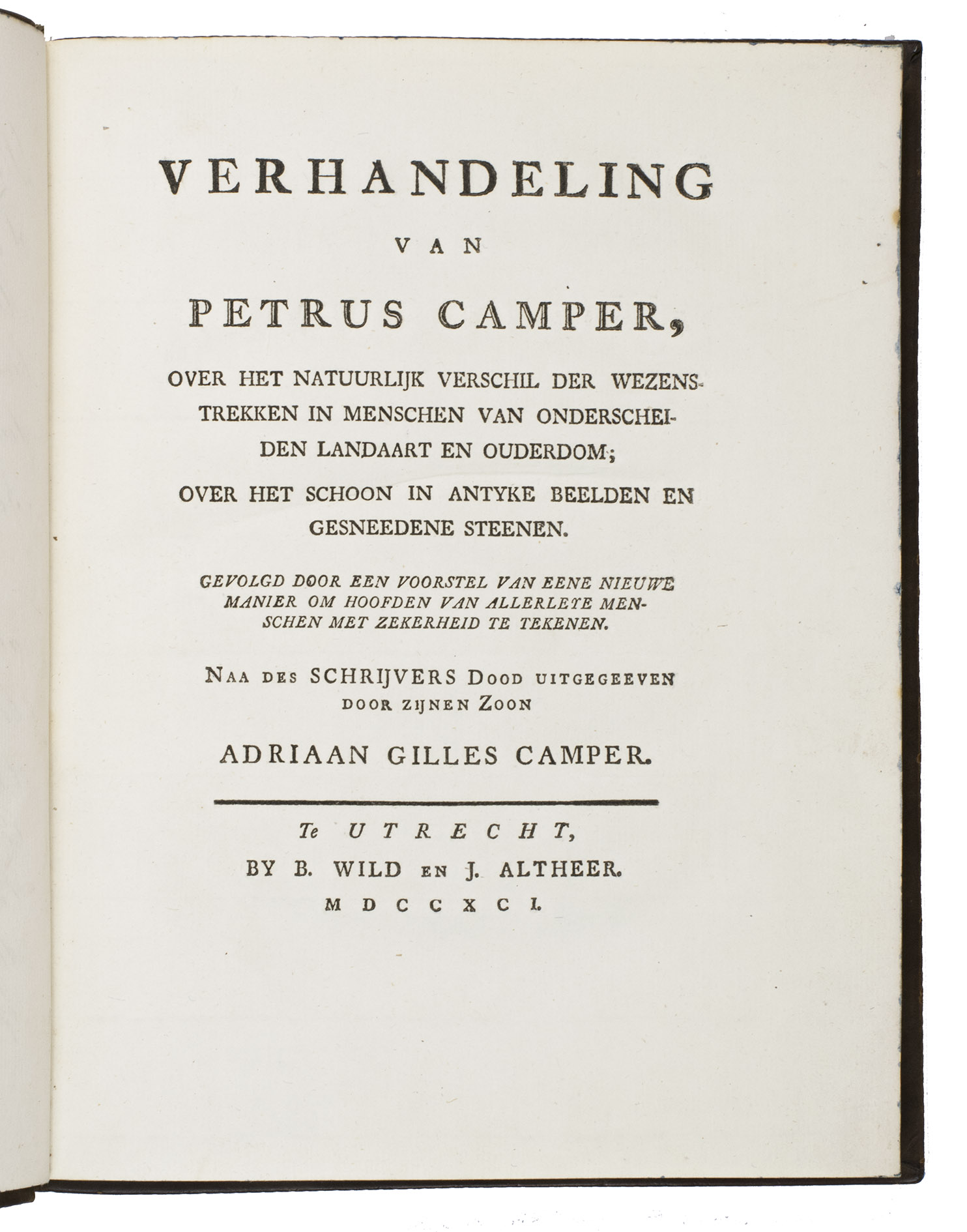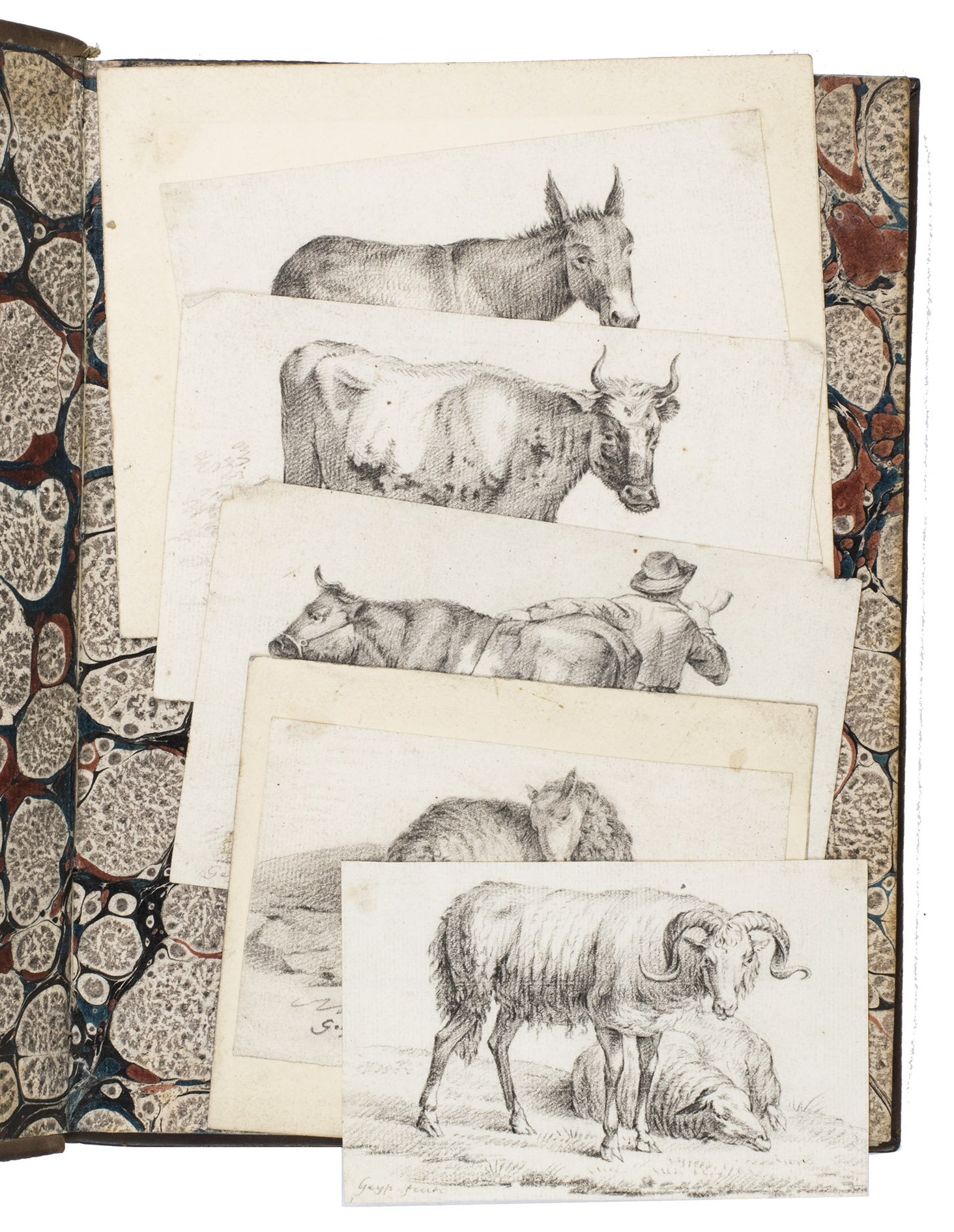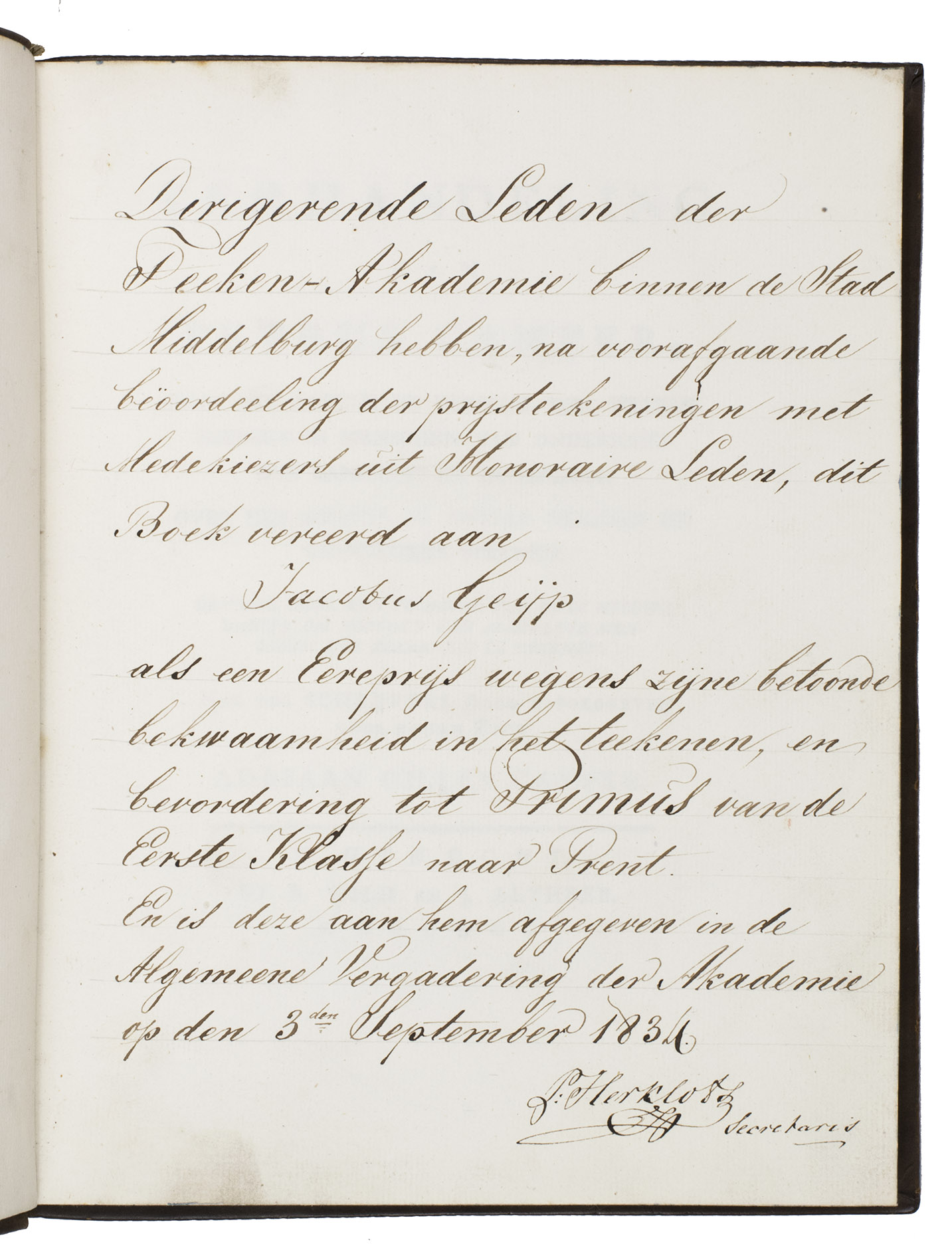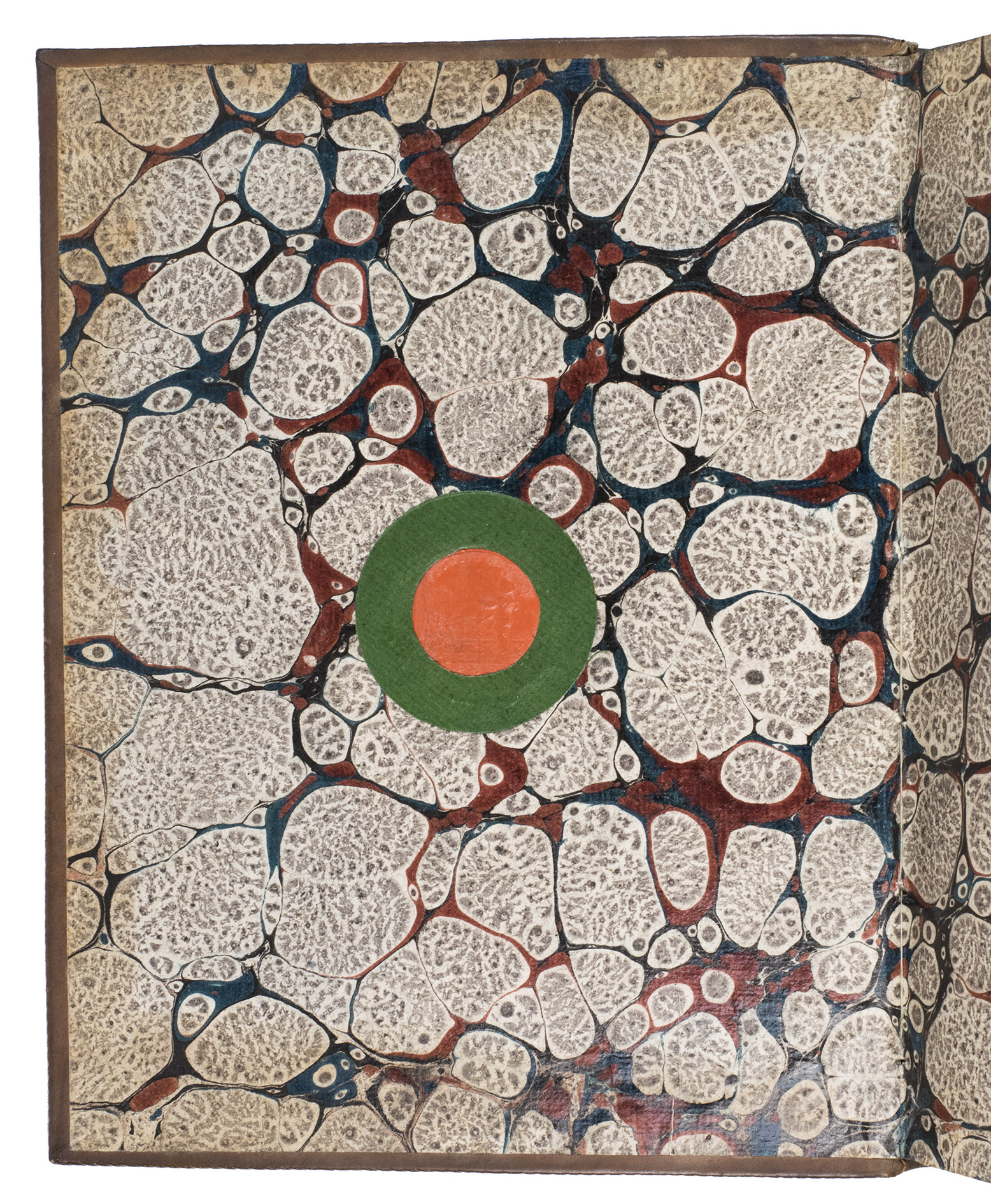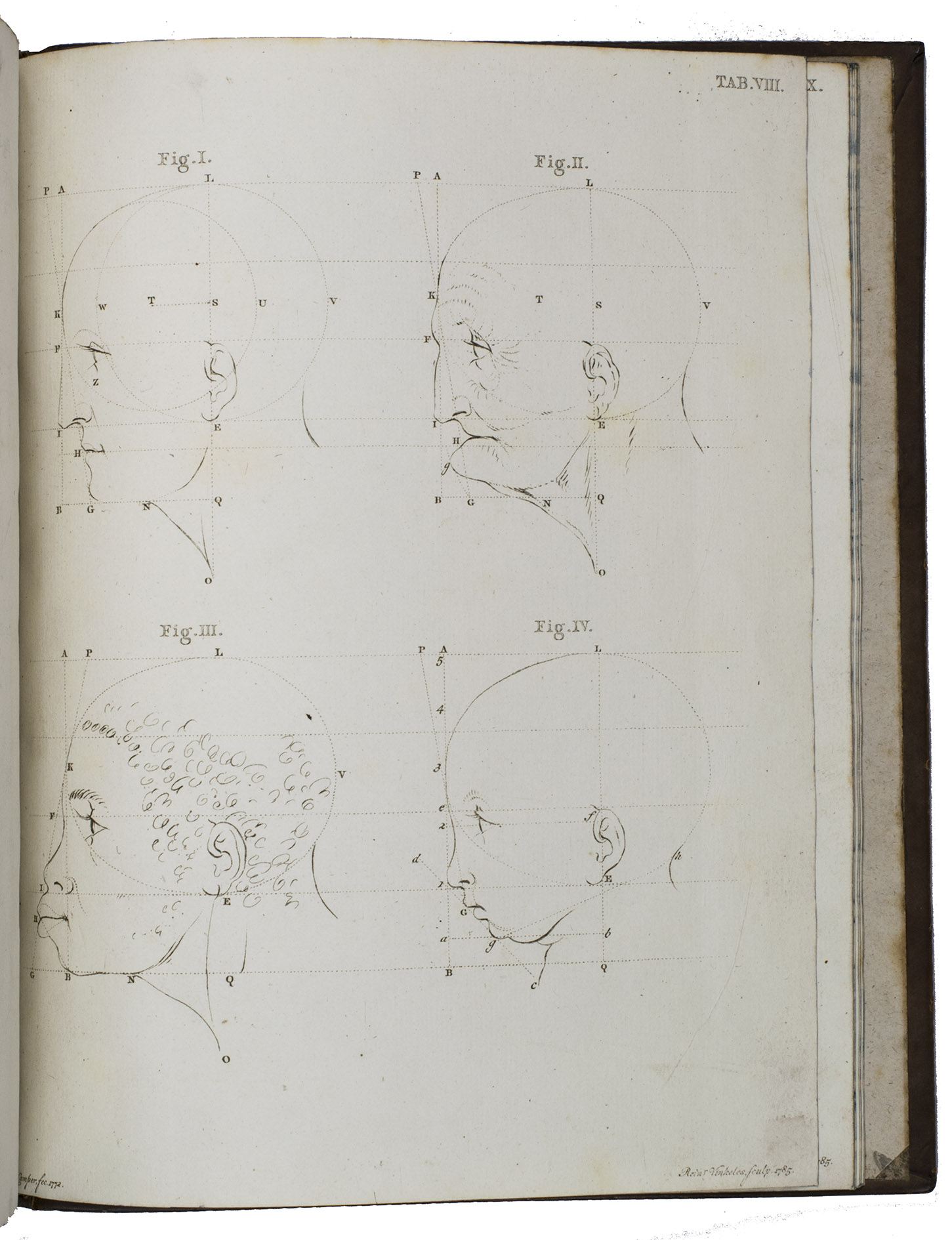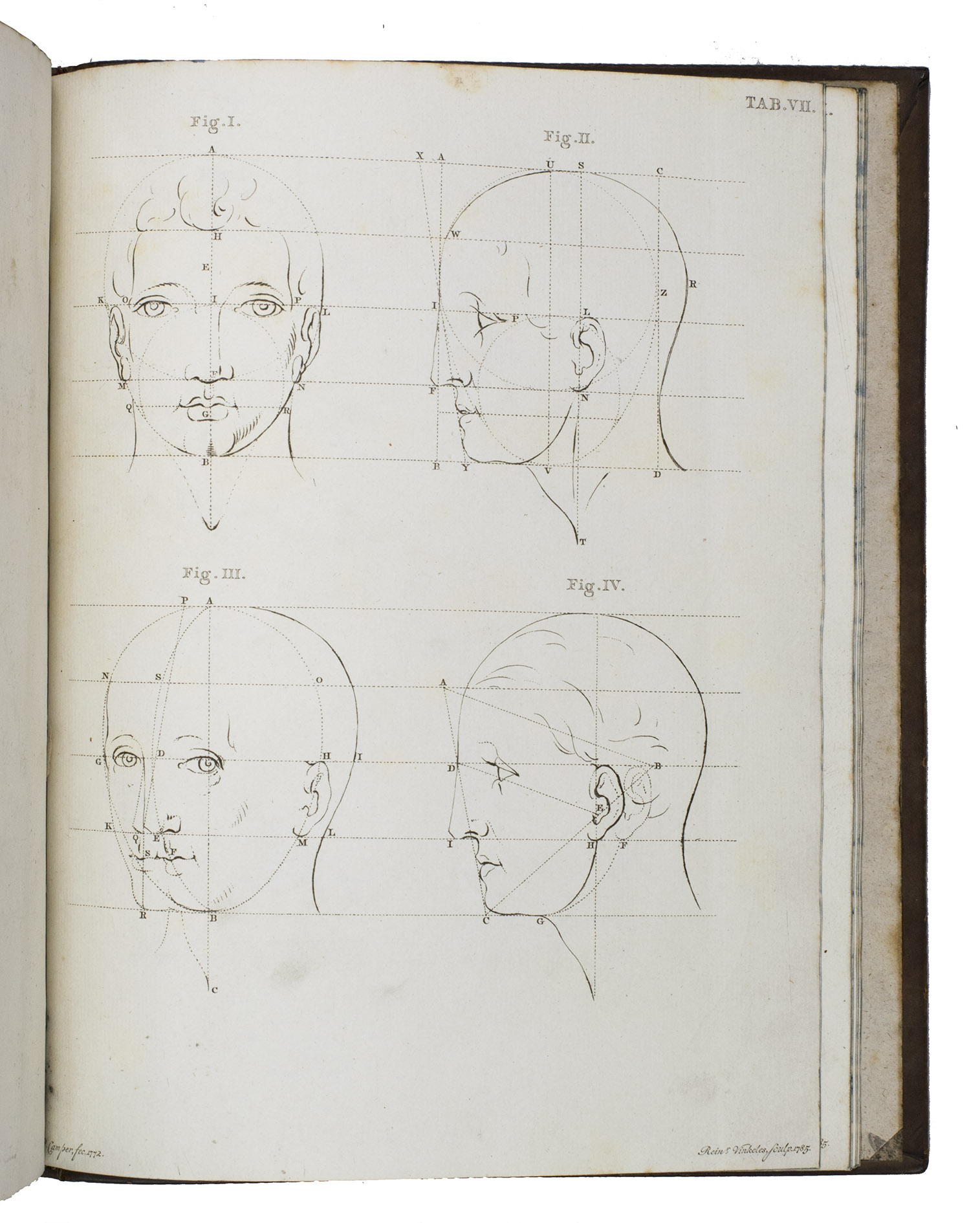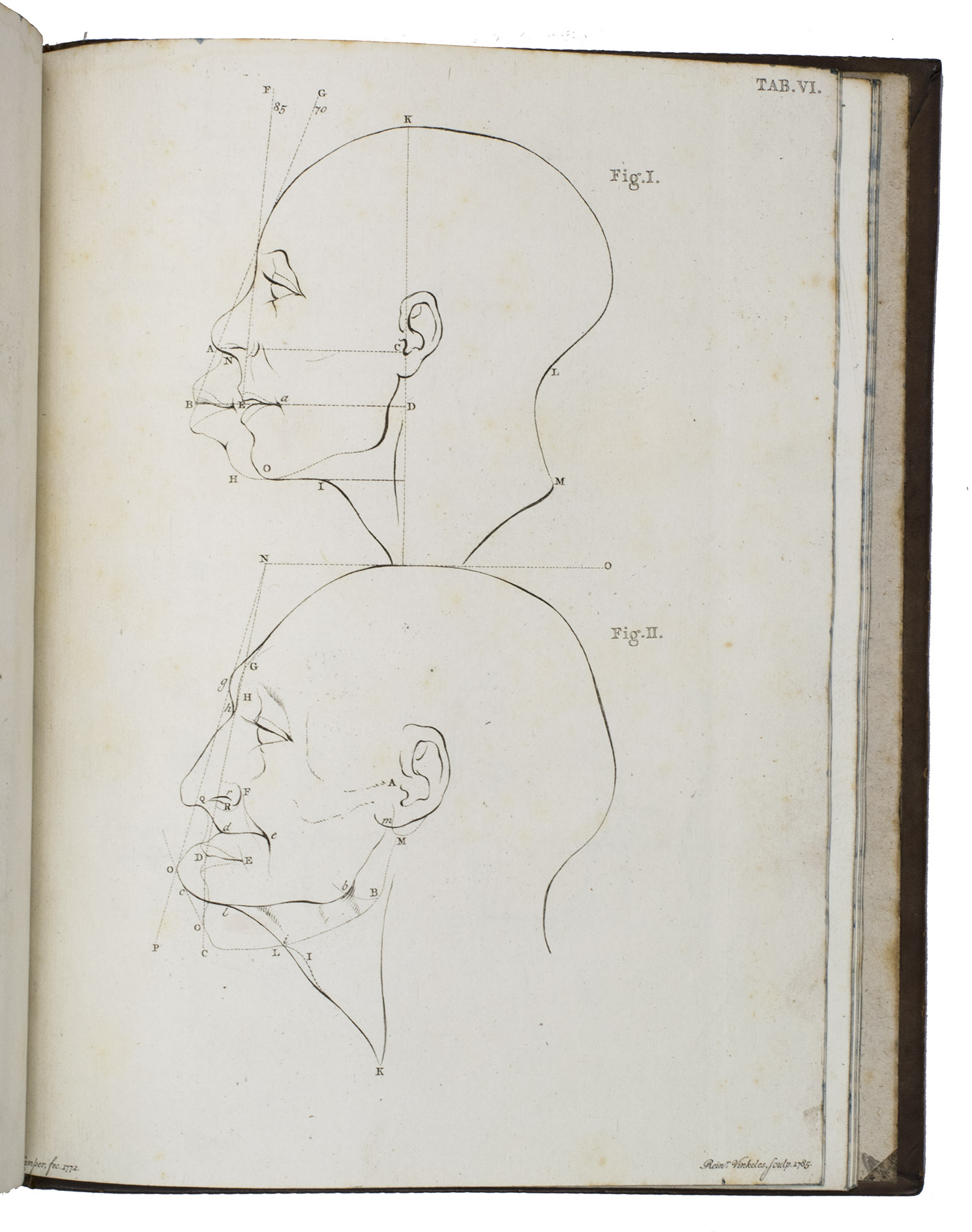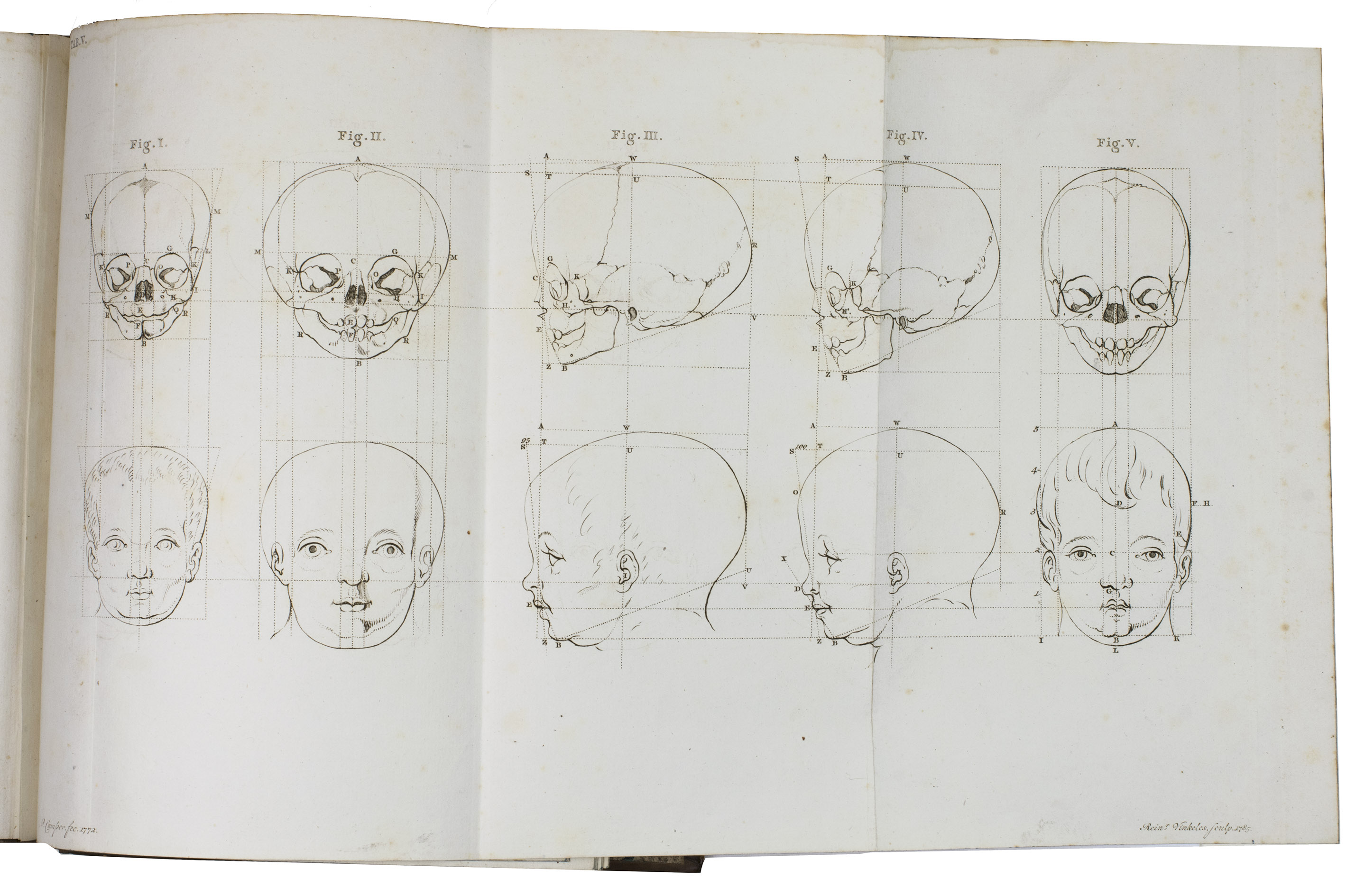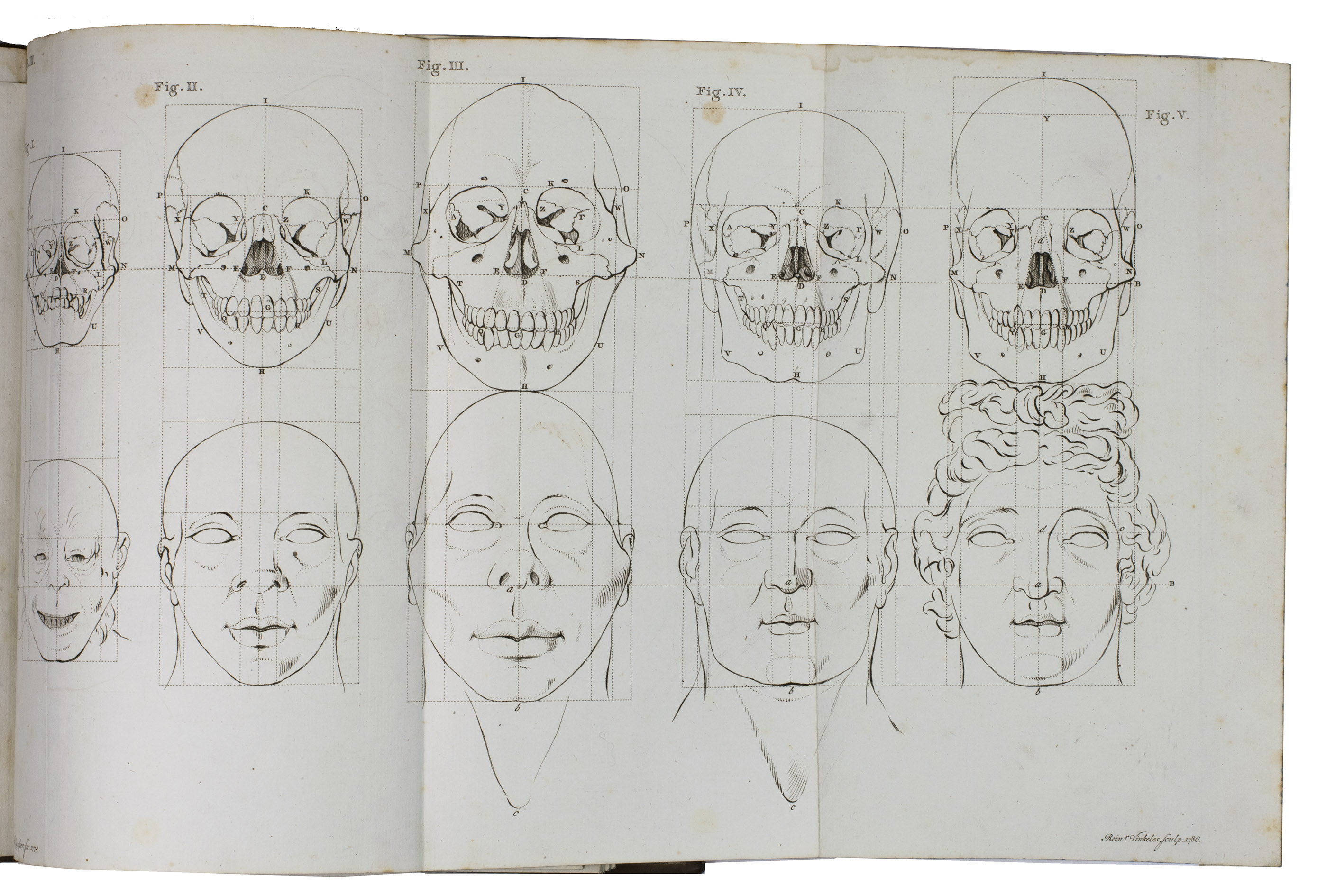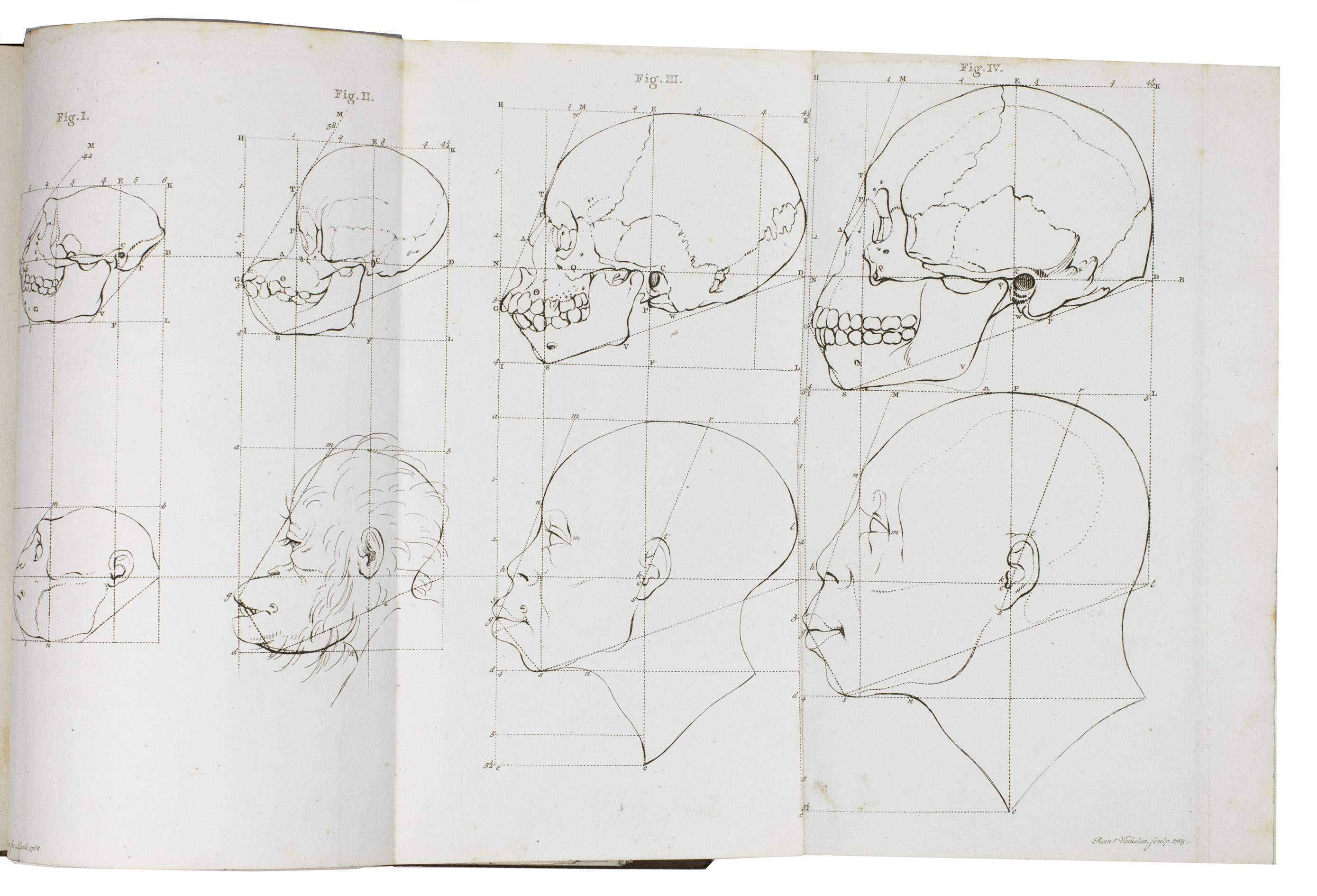CAMPER, Petrus.
Verhandeling van Petrus Camper, over het natuurlijk verschil der wezenstrekken in menschen van onderscheiden landaart en ouderdom; over het schoon in antyke beelden en gesneedene steenen. Gevolgd door een voorstel van eene nieuwe manier om hoofden van allerleye menschen met zekerheid te tekenen.
Utrecht, B. Wild and J. Altheer, 1791. Large 4to (ca. 26 x 20 cm). With 10 engraved plates: 5 folding double-page plates, 4 full-page plates, numbered I-IX and all dated ca. 1768-1786 in the plates, depicting heads and skulls of humans and apes engraved by Reinier Vinkeles after Petrus Camper, and 1 unnumbered plate depicting a geometric figure. 19th-century mottled calf, with a circular green morocco inlay lettered in gold, within a gold-tooled laurel wreath as a centre piece on both boards. "VIII" [= X], 108, [1]. [1 blank] pp.
€ 12,500
Splendid early 19th-century prize binding commissioned by the drawing academy in Middelburg for one of its students Jacobus Geijp (1814-1902), a painter from a Middelburg family of painters and artists. The present work was presented to Geijp as an honorary award after his drawings had been judged by the direction of the academy. Since the 16th century, it was customary for Latin schools and academies in the Netherlands to present their students with prize bindings in order to honour their work. This 1834-binding contains the first edition of Camper's famous work on cephalometry, or the study and measurement of the head. While the present work was published posthumously by Camper's son, it has probably contributed more to Camper's fame as a renowned anatomist and artists than any of his other works.
Petrus Camper (1722-1789) laid the foundation for all work using craniometrical methods. "Campers line" is the line running from the inferior border of the ala of the nose to the superior border of the tragus of the ear. According to the author the varieties of the human species could be distinguished by a precisely measurable characteristic, the so-called "facial angle". The pluriformity rested in the extension of the jaw and had nothing to do with superiority or inferiority of the various races, who are all descendants of Adam and Eve. It was the first real attempt of systematically measuring the human cranium.
The basis of the present work can be found in two lectures on cephalometry, held by Camper at the Amsterdam drawing academy in his capacity as professor of anatomy at the University of Amsterdam. He was also a competent artist and draughtsman and his lectures proved to be successful in demonstrating the difficulties and principles of measuring the dimensions of the human skull of various peoples (Europeans, Moorish, Chinese, etc.) in order to make better portraits that looked like the subjects.
Set in the front board behind the centre piece, but only visible from the inside of the front board, is a circular red wax seal of the "Teeken Akademie" in Middelburg (including the motto "Vernuft en Vlyt"). The third blank free flyleaf contains an elaborate manuscript dedication, the present work is gifted as an award by the direction of the Middelburg drawing academy to Jacobus Geijp, for some of his drawings; it is dated 3 September 1834 and signed by the Academy's secretary Pieter Herklots. Loosely inserted are 5 original drawings by Jacobus Geijp (signed "Geijp fecit") of farm animals, the verso of the final blank flyleaf shows pencil sketches of an eye. A.J. van Bork-Feltkamp, Antropological research in the Netherlands. Historical survey, in: Verhandel. Kon. Akad. v. Wetensch., afd. Natuurkunde, 2e sectie, dl. 37, no. 3, pp. 1-166 (esp. pp. 8-12); Choulant/Frank, p. 286; Carl Niekerk, Man and orangutan in 18th-cent. thinking. Retracing the early history of Dutch and German anthropology, in: Monatshefte, 96/4 (2004), pp. 477-502; NNBW, I, cols. 552-556; Vaderl. Letteroef. (1791), pp. 391-398; Waller, no. 1740; Wellcome Libr., II, p. 293; on Jacobus Geijp: K. Heyning & G. van Herwijnen [eds.], Om prijs en plaats: de Middelburgse Teeken Akademie, 1778-2003 (Middelburg, Stichting Zeeuwse Katernen, 2004. Grote Zeeuwse katernen, no. III).
Related Subjects:
